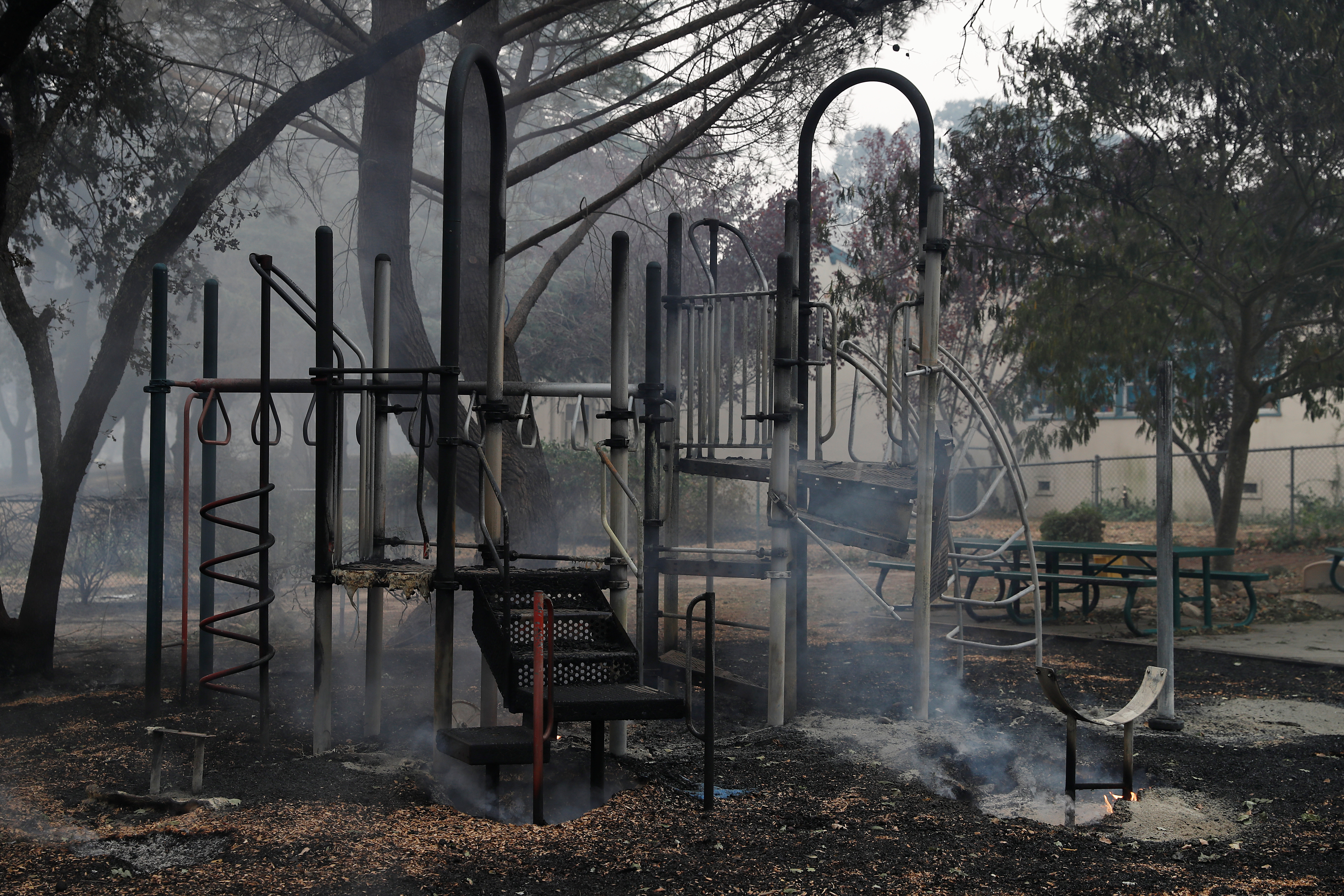
By Noel Randewich and Peter Henderson
PETALUMA, Calif./SAN FRANCISCO (Reuters) – At the Sonoma-Marin Fairgrounds north of San Francisco, Spanish is the language that dominates many conversations about shelters, work and how to survive the California wine country wildfires, one of the deadliest fire events to strike the Golden State.
The workers that tend vines, ferment wine, build homes and feed tourists in world-famous Napa and Sonoma counties are heavily Latino; Latinos count for more than a quarter of Sonoma’s population.
They also are among the worst hit by the fires that have killed more than 30 people, scorched over 190,000 acres (77,000 hectares) and destroyed more than a dozen wineries.
Flames bore down on a vineyard where Sofia Rivera, 50, was picking grapes at about 2 a.m. on Monday. She sped home, grabbed her five kids, and fled. On Friday, she piled donated diapers onto a stroller at the fairgrounds shelter in Petaluma, calculating her money will last only a week.
“There’s no work, and we don’t know if there will be work,” said Rivera, a widow and native of Michoacan, Mexico.
The Latino population of Sonoma and Napa counties grew by more than 60 percent each between 2000 and 2015, outpacing a 38 percent growth in the Bay Area as a whole, according to U.S. Census data provided by Sonoma County. And it still is rising.
Many of those are workers who have come to the country illegally and are particularly vulnerable now, said Sonoma County Supervisor Lynda Hopkins. Her district includes some wine-making country and the Sonoma coast, whose beaches have been claimed by evacuees, including immigrants who feared immigration authorities would target them at shelters, she said.
“What we saw in my district was a huge flood of Latino evacuees to the coast,” she said. “Folks just went right past those shelters and they tried to get, I think, as far away from the fire as possible, but also beyond institutional help, on purpose.”
STARTING OVER
The less affluent would be hardest hit as wine country rebuilds, with owners of destroyed homes and an influx of construction workers competing for temporary housing and driving up prices, she said.
“We already had completely unaffordable housing costs for both rental and purchases, and those are only going to increase in the wake of this disaster,” Hopkins said. Some mobile homes were listed for sale in Santa Rosa for more than $150,000.
County officials have put out the word that immigration officials will not be chasing evacuees, but there is a clear sense of fear, said Ana Lugo, president of the North Bay Organizing Project. The group is organizing a fund for those evacuees in the country illegally, who are not likely to get federal aid.
She also is concerned that affluent communities burned down by the fire may get more local help than those less well off, a tale of two cities that Supervisor Hopkins hopes to avoid.
Armando Flores is likely to be one of those swinging hammers in the rebuilding of homes and entire communities.
A carpenter who came to California from Mexico four decades ago at the age of 16, and now a U.S. citizen, Flores left his valuable tools at a house he was working on. He fled to a shelter after getting a text message alert on Wednesday night.
He fears those tools may have been lost to flames. “But I left Mexico with nothing,” he said. “And I can start again with nothing.”
(Editing by Mary Milliken)


















